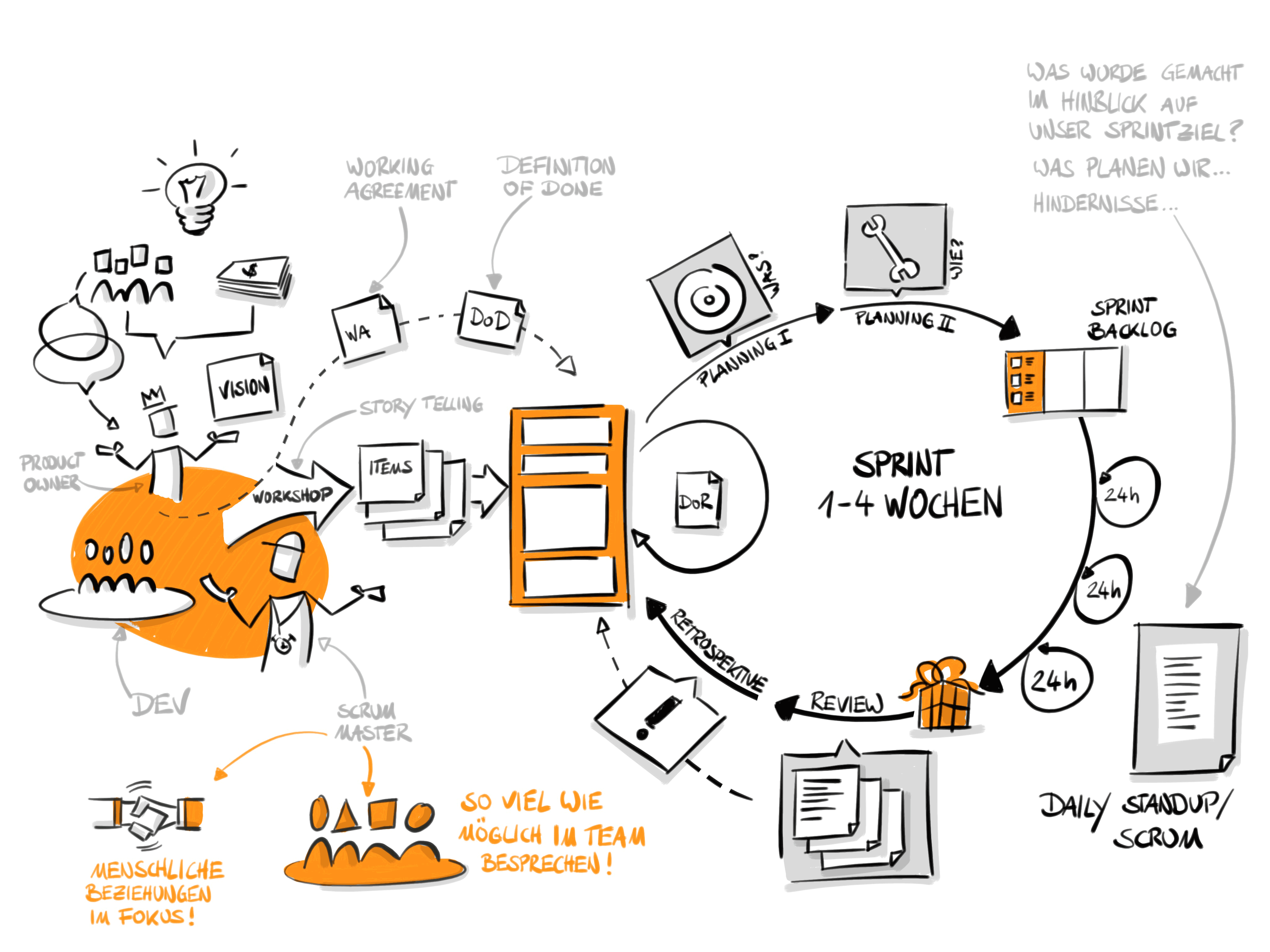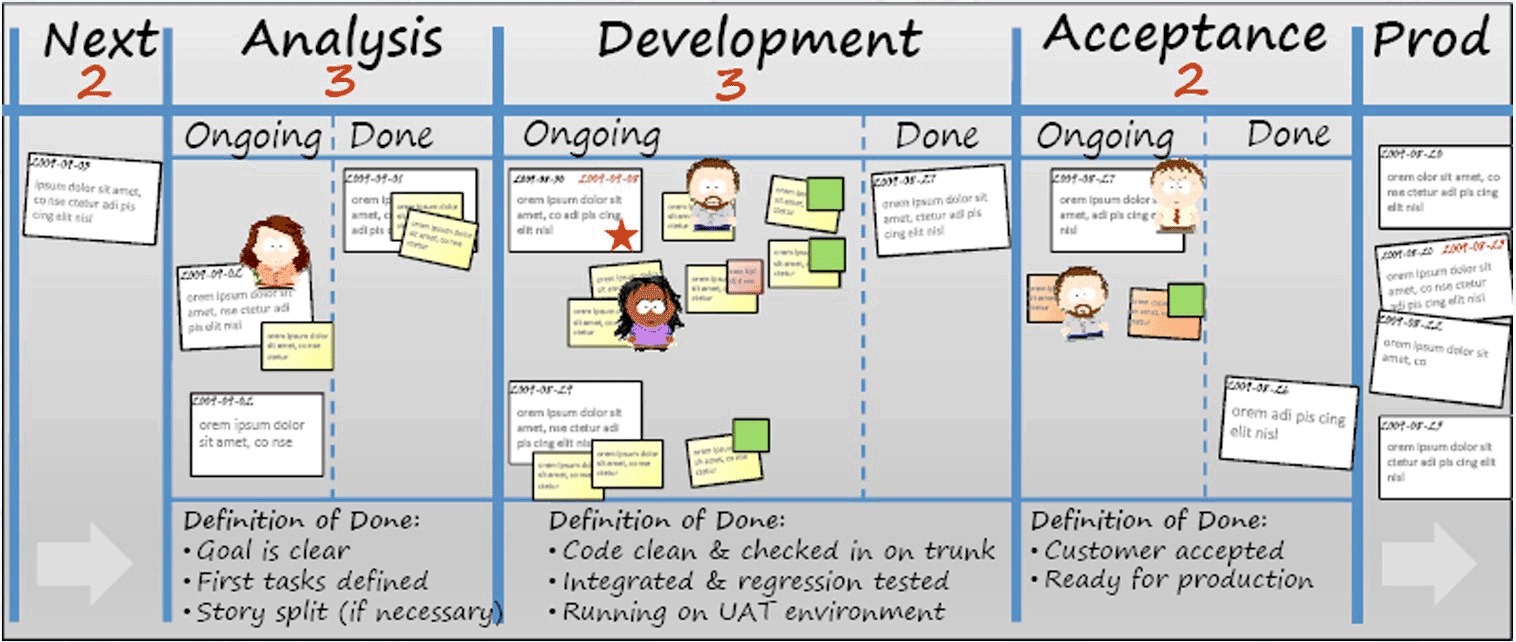

Small and medium sized businesses
The discussion about the appropriate Management method quickly turns into an ideological war of faith : Everyone believes they know the right approach, overestimates it and ignores the merits of others. It is worth comparing Scrum and Kanban in order to recognize the strengths and weaknesses of both process methods . And it becomes clear: Scrum and Kanban have a lot in common:
- both methods are mainly used in software development>.
- both methods have the goal to increase productivity.
- both methods say Idline run and duplications fight an.
This is how Scrum
works
In comparison to Kanban, Scrum places a stronger focus on the organizational structure of a team:
- The Scrum-Master keeps track of all processes, organizes meetings and regulates the Communication exchange inwards and outwards.
- The Product Owner keeps an eye on the product backlog. This means that he makes sure that dthe list with the customer’s requirements is processed piece by piece . In addition, it determines the priority of the individual tasks.
- Das Team is set up interdisciplinary and tries to tick off the tasks bit by bit in individual development phases (called Scrum Sprints). At the end of every sprint there should ideally be a deliverable feature or product.
Scrum also provides for daily meetings(Daily Scrum) in which the team plans the sprints and retrospectivelyevaluates them. Tip: In order not to drag the meeting indefinitely, it is best to conduct it standing up and limit it to 15 minutes.
This is how Kanban works
The word Kanban comes from the Japanese and is composed of the words KAN (visualize) and BAN (map). This management method was originally developed by Toyota and has the great advantage that everyone knows what work they are responsible for. This may sound banal at first, but for a fast processing time of the process steps this is fundamental.
At the centre of the management method is a board – the kanban board. There the workload for each individual employee is shown on cards. The cards>/strong> pass like a ticket the different process steps from backlog, test to completed.
Thereby you recognize …
- where the work jams,
- which colleague needs help or
- who is currently unchallenged.
In contrast to Scrum, there is no master who watches over everything – the workers take a look at the Kanban board and pick up their work themselves. This leaves a lot scope for own responsibility. The loose hierarchies at Kanban therefore assume that the team organizes itself.
These are the strengths and weaknesses of Scrum and Kanban:
- PlusPluspunkt bei Scrum: The stringent set of rules and fixed role assignment give the team a certain strong>robustness. Due to the recurring processes (sprints, meetings in the Daily Scrum) it is also easier to develop a certain strong>routineroutine. Since Kanban lacks these fixed roles, exact planning is more difficult with this management method.
- Scrum: Meetings are monstrous Time-eaters. If only three or four people are working on the project, there is no need for meetings. If they are sitting in the same room, the participants talk to each other all the time anyway.
- >Pluspunkt bei Kanban: The Overload of employees at Kanban is more visible thanks to the board systemthan at Scrum. Since sprints must not be interrupted or prolonged, the Scrum method often leads to a misjudgement of the workload.
- >Minus point at Kanban: The visualization of the work steps on the Kanban board optimizes the workflow; with large projects and many small tasks the overview with many cards and names on the board is easily lost.
Fazit: The use of Scrum is particularly worthwhile in large, complex projects, while Kanban smaller, clear tasks plays out its strengths.
